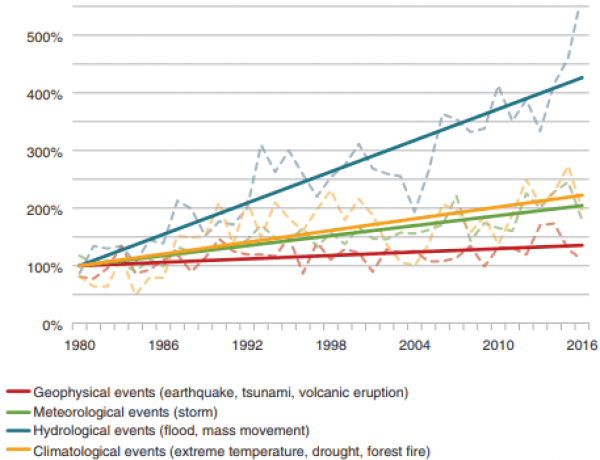Man-made climate change has been proven to have increased recent extreme rainfall and associated floods; coastal flooding due to sea-level rise; heatwaves in Australia, China, and Europe; and increased risks of wildfires with implications for humans and animals, the environment, and the economy. Climate proofing can help to limit these impacts.
New data show that extreme weather events have become more frequent over the past 36 years, with a significant uptick in floods and other hydrological events compared even with five years ago, according to a new publication, “Extreme weather events in Europe: Preparing for climate change adaptation: an update on EASAC’s 2013 study” by the European Academies’ Science Advisory Council (EASAC), a body made up of 27 national science academies in the European Union, Norway, and Switzerland. Given the increase in the frequency of extreme weather events, EASAC calls for stronger attention to climate change adaptation across the European Union: leaders and policy-makers must improve the adaptability of Europe’s infrastructure and social systems to a changing climate.
Globally, according to the new data, the number of floods and other hydrological events have quadrupled since 1980 and have doubled since 2004, highlighting the urgency of adaptation to climate change. Climatological events, such as extreme temperatures, droughts, and forest fires, have more than doubled since 1980. Meteorological events, such as storms, have doubled since 1980.
Continue reading at European Academies Science Advisory Council
Image via EASAC


